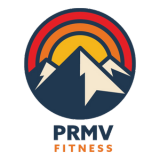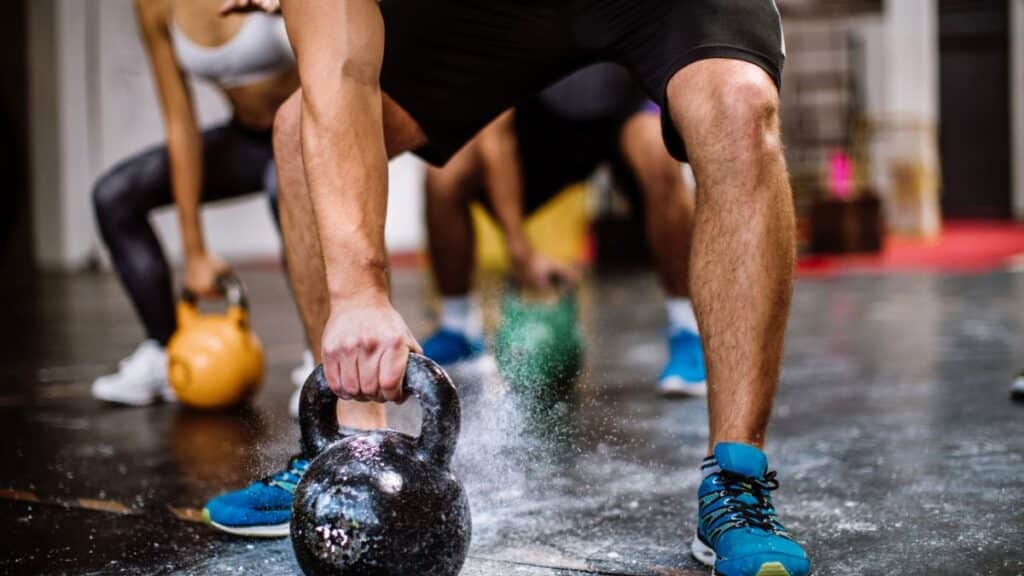Hey there! If you're new to working out and want to get fit in a fun and effective way, I'm excited to introduce you to kettlebell training.
Kettlebells are a fantastic fitness tool for beginners because you can get an amazing full body workout using just one or two kettlebells. The dynamic kettlebell movements will boost your cardio endurance, build muscular strength, and increase mobility all at once.
In this beginner's guide, we'll go over everything you need to know to get started with kettlebells. By the end, you'll feel excited and prepared to incorporate kettlebells into your own workout routine!
What are Kettlebells?
Kettlebells are cast iron weights, usually ranging between 5 to 48 pounds. They're shaped like a cannonball with a handle on top.
Kettlebells originated in Russia as a training tool for athletes and strongmen. Unlike dumbbells, the asymmetrical shape and handle placement of kettlebells allow a wider variety of full-body movement patterns and grip positions.
Nowadays, kettlebells have become a popular fitness tool around the world for all types of training goals. With as little as one kettlebell, you can get an extremely effective total body workout!
Benefits of Kettlebell Training
Here are some of the major benefits you can expect when you incorporate kettlebell training into your fitness regimen:
Builds Functional Strength
Kettlebell exercises involve dynamic movements working multiple joints and muscle groups all at once. This builds balance, coordination, and explosive power that translate directly into everyday activities.
You'll develop functional strength to lift heavy bags with ease, play sports, carry kids, tackle yardwork, and more!
Increases Cardiovascular Endurance
The dynamic nature of kettlebell movements also provides excellent cardiovascular conditioning. Swinging and moving the kettlebell continuously spikes your heart rate similar to high intensity interval training.
You'll boost your VO2 max, increase lung capacity, and burn plenty of calories with kettlebell training. It's an efficient way to get your cardio in!
Improves Mobility
Kettlebell exercises take your joints through a broad range of motion. The constant movement increases mobility and range of motion, especially in the hips, knees, and shoulders.
You'll notice increased flexibility which makes all your movements feel smoother!
Develops Core Stability
Due to their asymmetrical shape, kettlebells challenge your core to work extra hard to stabilize your spine and pelvis during exercises. Your core will get stronger in order to control the weight.
A solid core makes all movement more powerful and helps prevent back pain.
Requires Minimal Equipment
You truly only need one or two kettlebells to get an extremely effective workout. No fancy gym membership required!
Kettlebell training is accessible anywhere...in your garage, backyard, local park, while traveling, and more. It's a convenient workout option when life gets busy.
It's Fun!
Lastly, kettlebell training is just plain fun! The constant motion keeps things interesting and the time flies by. You'll look forward to your workouts!
Now that you know the major benefits of training with kettlebells, let's get into the exercises I recommend starting with as a beginner.
Getting Started with Kettlebells
Here are a few tips to guide your kettlebell training as a beginner:
- Start light: As you're learning proper form, use a lighter kettlebell in the 15-25lb range. Proper technique is more important than heavy weight at first!
- Focus on control: Move slowly and with control. Avoid jerky, fast movements until your form improves.
- Own each rep: Fully finish each rep with proper form before moving to the next. Quality over quantity!
- Listen to your body: Know when to push yourself and when to give muscles a day of rest. Recovery is important for strength gains.
Now let's get into the nitty gritty - proper kettlebell exercise technique! I'll provide form cues and descriptions for five foundational kettlebell exercises to get you started.
5 Essential Kettlebell Exercises for Beginners
1. Kettlebell Deadlift
The deadlift is a perfect foundational movement because it teaches the hip hinge pattern that is used in almost every kettlebell exercise. Mastering the deadlift will set you up for success with all other KB movements.
Here's how to perform it with proper form:
- Stand with feet about hip-width apart. Send your hips back like you're closing a car door behind you.
- Push your chest out proudly and keep your back flat. Do not round your shoulders.
- Grab the kettlebell handle with both hands, palms facing you. Use an overhand grip.
- Drive through your heels to stand up tall, squeezing your glutes at the top.
- Slowly lower the kettlebell back down by sending your hips back again. Keep your back flat.
Really focus on hinging at the hips rather than bending your back. This grooves the proper hip hinge pattern and protects the lower back.
2. Kettlebell Goblet Squat
The goblet squat is a great way to learn proper squat mechanics in a safe position. It gets your entire lower body working!
Here are the form cues:
- Hold the kettlebell at your chest using both hands around the handle. Elbows point down with forearms vertical.
- Push your hips back and bend knees to lower down into a squat.
- Keep your chest up and back flat throughout the movement. Don't let your back round.
- Go as low as you can while keeping your heels on the floor.
- Press into your heels to drive back up to standing. Fully extend your hips at the top.
Focus on sending your hips back to initiate the movement. This keeps weight in your heels, not toes. Precise form prevents knee pain.
3. Kettlebell Row
Rowing is awesome for strengthening your back muscles and improving posture. It also reinforces the hip hinge pattern.
Let's focus on proper form:
- Hinge at your hips with a soft knee bend. Keep your back flat, don't round your shoulders.
- Grab the kettlebell handle with one hand, arm extended straight underneath your shoulder.
- Pull the kettlebell straight up towards your ribcage by squeezing your shoulder blade back.
- Focus on squeezing the muscles between your shoulder blades.
- Slowly straighten your arm to lower the kettlebell back to the starting position.
Avoid twisting your torso as you row. The rowing arm should be the only thing moving. Keeping your core engaged prevents lower back strain.
4. Kettlebell Swing
The swing is definitely the most dynamic kettlebell exercise, and it takes a bit of practice to perfect. But the results - a powerful posterior chain and increased cardiovascular endurance - make it worthwhile!
Here are cues to ensure proper form:
- Hold the kettlebell with both hands in front of your body. Hinge at the hips to send your butt straight back.
- Drive your hips forcefully forward to propel the kettlebell between your legs in a pendulum motion.
- As the kettlebell swings forward, squeeze your glutes and stand up tall.
- As it swings back between your legs, hinge at the hips again to send your butt back.
- Control the motion as you swing the kettlebell back down between your legs.
It takes time to get the coordinated hinge-swing-squeeze motion down. Go slowly until you have it mastered! Proper form prevents low back injury.
5. Kettlebell Overhead Press
Presses are excellent for developing strong, stable shoulders. Just make sure to avoid arching your back as you press overhead.
Here's how to do it properly:
- Clean the kettlebell to your shoulder first by hiking it between your legs and standing up quickly.
- Press the kettlebell straight overhead by driving through your heels and using your leg power.
- Keep your core tight and don't let your lower back arch as you press overhead.
- Slowly lower the kettlebell straight back down to your shoulder under control.
Keep knees slightly bent and glutes engaged throughout the press. This takes pressure off the lower back. Avoid pressing weight that is too heavy overhead until you build more shoulder and core stability.
Sample Beginner Kettlebell Workout
Now that you have 5 foundational kettlebell moves down, let's put them together into a complete workout!
Here is a 15 minute beginner kettlebell circuit using only one kettlebell:
- Kettlebell Deadlift x 10 reps
- Kettlebell Goblet Squat x 10 reps
- Alternating Kettlebell Row x 10 reps per side
- Kettlebell Swing x 15 reps
- Kettlebell Overhead Press x 5 reps per side
Rest 90 seconds between each exercise. Complete 2 full rounds total.
This workout hits your total body with a balance of lower body exercises, upper body pulling and pressing, and dynamic cardio with the swing. Mix up the order each time you do it to keep your body guessing!
I suggest starting with a 15-25lb kettlebell if you're new to strength training. It may feel too light at first, but proper form should come before heavy weight. You can progress to heavier kettlebells once you perfect your technique.
Most importantly - have fun with it! Kettlebell training gives you an amazing workout, but also keeps things interesting. There are so many great movements and combinations to try out once you're comfortable with the basics.
Safety Tips for Injury Prevention
While kettlebell training is extremely effective, it's important to keep proper form in mind, especially as a beginner. Here are some key tips to prevent injury:
- Maintain a neutral spine during all exercises. Do not overly arch lower back.
- Move slowly and with control. Avoid jerky movements that put strain on muscles.
- Engage your core to provide stability during exercises.
- Do not swing the kettlebell above shoulder height if you cannot control it.
- Start with lighter weight while perfecting form and slowly increase over time.
- Give muscles a day of rest between intense kettlebell sessions to allow for recovery.
Listen to your body and discontinue any exercise that causes pain. It's always better to ask a certified trainer if you're unsure about proper form. Proper technique prevents injury and leads to better results!
Are You Ready to Get Started?
There you have it - a complete beginner's guide to safely and effectively start kettlebell training!
I hope you're feeling motivated and excited to include kettlebells in your fitness regimen. They are such a fun way to get a full body workout at home with minimal equipment.
Remember to focus on proper form rather than heavy weight as you're getting started. Mastering the foundational movements first will set you up for kettlebell success and prevent injury.
Let me know if you have any other questions! I'm always happy to provide more tips and workout ideas using kettlebells.
Now grab your kettlebell, turn up your favorite pump up jams, and let's have some fun getting fit together!

